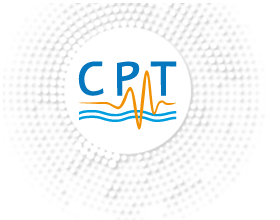Agenda
Mercredi 3 mars 2021
Chaos in navigation satellites
Jérôme Daquin,Jerome Daquin, University of Namur, Dpt of Mathematics
The threat raised by space debris has vivified long-term studies of terrestrial
orbits. To apprehend the motion on long time scales, the Astrodynamics
community has translated, deployed and adapted many tools coming from
Dynamical System theory and Celestial Mechanics. During this seminar, I will
review and discuss some aspects of the long-term dynamics of terrestrial
orbits, especially in the range of medium altitude. In particular, I’ll reveal
a manifold structure in a 3 degrees-of-freedom Hamiltonian system physically
representative of the dynamics of navigation satellites. Long-time properties
of the system are explained in terms of the possible normally hyperbolic
manifold structure and the associated stable and unstable manifolds regulating
transport properties. Those transport properties could be appealing for end-
of-life strategies based on manifolds dynamics.
Large deviations and dynamical phase transitions in stochastic chemical networks
Alexandre Lazarescu (Université de Louvain)
The standard (macroscopic) description of chemical reactions in a well-mixed dilute solution is a set of coupled first-order differential equations in time on the concentration of every species in solution. A natural way to describe the same system at a microscopic scale (i.e. for a priori finite numbers of chemical particles, rather than finite concentrations) is through the chemical master equation, which is a Markov jump process on probability distributions of chemical compositions (the number of particles of each species), which is consistent with the former macroscopic description, in the appropriate scaling limit.
Large deviation functions, sometimes called dynamical free energies, are the natural language to describe fluctuations around the typical behaviour of such stochastic systems in the limit of either a large size, or a long observation time. In this talk, I will present recent results on the structure of large deviations for stochastic chemical networks with mass-action dynamics. We will see how, in the limit of a large volume with finite concentrations, the stochastic evolution of the system can be described through a path integral involving a non-quadratic Hamiltonian which can be calculated explicitly. We will then look at probabilities of observing certain unlikely averages of concentrations and chemical currents over a long time, which can be recast as solutions of Hamilton’s equations of motion for said Hamiltonian. We will see how those distributions generically exhibit dynamical phase transitions if the macroscopic set of coupled differential equations has several stable attractors, and we will illustrate this fact on the Schlögl model, which is one of the simplest bistable chemical systems.
